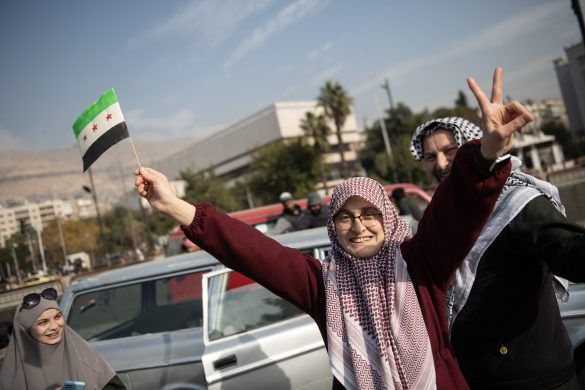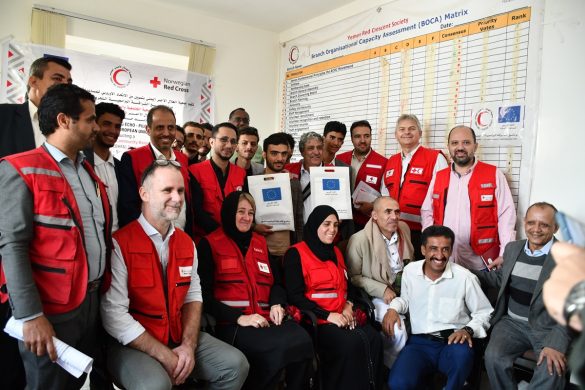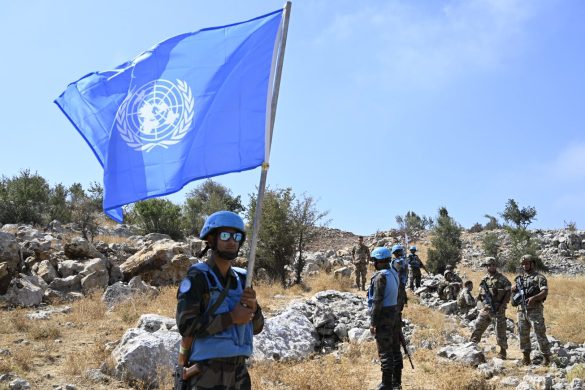Yemen blev engang omtalt som det sagnsomspundne Edens Have på grund af sine bjerge og livgivende vand på den ellers så knastørre Arabiske Halvø – men sådan er det ikke mere og myndighederne gør stort set ingenting ved vandkrisen.
SANA’A, 13 August 2012 (IRIN): Under a staircase (trappe), clinging to a wall of Sana’a’s Grand Mosque, groups of women and children lug plastic canisters to the leaky spigots (haner) of a public fountain.
Some small children struggle with canisters nearly their size as they weave slowly between the fountain and the pushcarts (kærrer) used to wheel the water back home.
Whether in cities or villages, this is how millions of Yemenis secure their day’s supply of water.
Since few can afford to pay for water to be pumped to their building, public urban fountains, which are free, remain the only option for most.
Umm Husein, a resident of the capital Sana’a, said she has tap water only once or twice a week. Trips to the communal fountain – taking time out of work or studies – involve her whole family. “The women, the children, every day we go to the fountain to get water,” she said.
Water and sanitation are chronic problems in Yemen, where, on average, each Yemeni only has access to about 140 cu.m. of water per year for all uses. (The Middle East average is about 1.000 cu.m. per person per year.)
In recent years, the government of former President Ali Abdullah Saleh had taken strides to improve water access in Yemen, but the political turbulence that arose from last year’s uprising has pushed water down the new government’s list of priorities, according to aid workers and a government employee.
Changing priorities
Two years ago, Yemen’s General Rural Water Authority (GRWA) commissioned a general assessment of existing water projects and coverage.
The organizations that took part in the assessment came to a collective decision to focus on rainwater harvesting in Yemen’s highlands, and on water drilling in the coastal and desert areas.
Yet the ensuing political chaos put a halt to progress in implementing solutions, according to Abdulwali El Shami, an engineer in the government’s Public Works Project (PWP) in Sana’a.
Beset with crises on various fronts, the new president, Abd Rabbu Mansoor Hadi, has put little energy towards resolving the water crisis threatening the majority of Yemenis.
Indeed, Ghassan Madieh, a UNICEF water specialist in Sana’a, said he did not “see any serious attention being given to the issue of water scarcity (knaphed), or the low coverage in water and sanitation.”
Jerry Farrell, country director of Save the Children in Yemen, echoed this assessment: “[In June], the Ministry of Planning rolled out its plan for the next 20 months…and water was at the bottom of the list.”
Though solutions exist, the will and attention necessary to put them into practice remain absent, observers say.
Farrell said that without a greater governmental commitment to water issues, international aid organizations dealing with water will not be able to work effectively in the country.
The government must also provide water subsidies for the extremely poor while water infrastructure is developed, he added.
A country run dry
Læs videre på
http://www.irinnews.org/Report/96093/YEMEN-Time-running-out-for-solution-to-water-crisis
Se også
http://www.irinnews.org/Report/75184/YEMEN-Qat-cultivation-threatening-water-resources-specialists-warn














